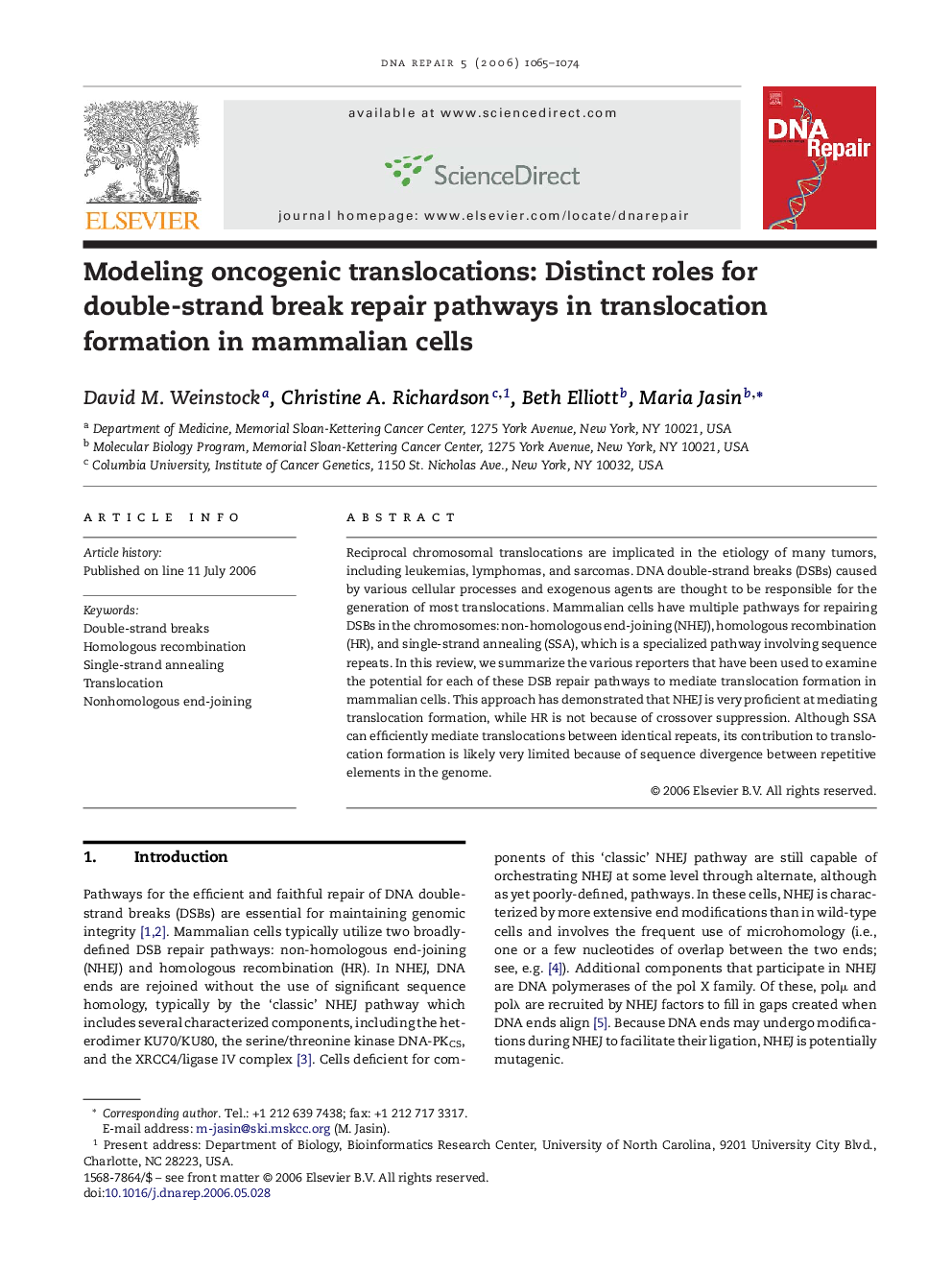| کد مقاله | کد نشریه | سال انتشار | مقاله انگلیسی | نسخه تمام متن |
|---|---|---|---|---|
| 1981091 | 1539417 | 2006 | 10 صفحه PDF | دانلود رایگان |

Reciprocal chromosomal translocations are implicated in the etiology of many tumors, including leukemias, lymphomas, and sarcomas. DNA double-strand breaks (DSBs) caused by various cellular processes and exogenous agents are thought to be responsible for the generation of most translocations. Mammalian cells have multiple pathways for repairing DSBs in the chromosomes: non-homologous end-joining (NHEJ), homologous recombination (HR), and single-strand annealing (SSA), which is a specialized pathway involving sequence repeats. In this review, we summarize the various reporters that have been used to examine the potential for each of these DSB repair pathways to mediate translocation formation in mammalian cells. This approach has demonstrated that NHEJ is very proficient at mediating translocation formation, while HR is not because of crossover suppression. Although SSA can efficiently mediate translocations between identical repeats, its contribution to translocation formation is likely very limited because of sequence divergence between repetitive elements in the genome.
Journal: DNA Repair - Volume 5, Issues 9–10, 8 September 2006, Pages 1065–1074